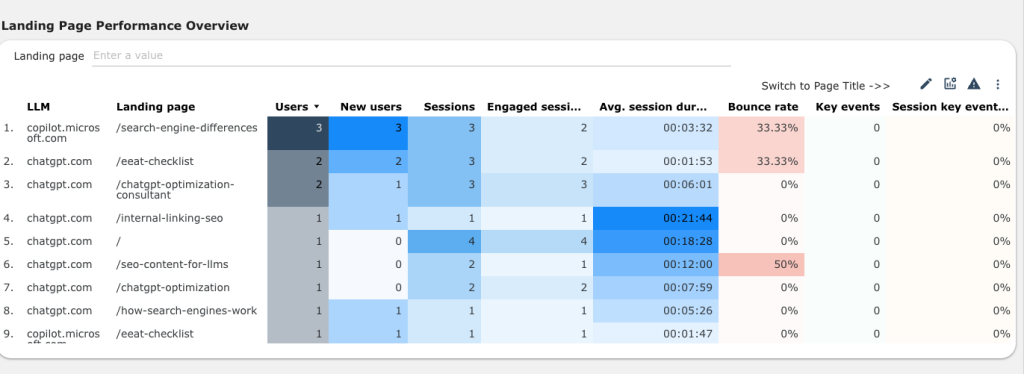Why it matters, how to find it, and what to do with the data
If you’re working in ecommerce, you may have noticed a new referral source popping up in Google Analytics 4 (GA4): chat.openai.com.
That’s ChatGPT, and it’s quietly becoming one of the most engaged traffic sources on the web.
It won’t show up in your standard reports, but with a few clicks, you can track it, analyse it, and start optimising for it.
Let’s walk through how.
Why ChatGPT Traffic Matters
Even if the volume is small now, the intent is massive. Based on our client data, ChatGPT visitors often:
- Spend more time on site than organic search users
- Visit more pages per session
- Bounce less
- Are further along in the buying journey
These are warm leads, and in some cases, sales-ready ones.
So while ChatGPT traffic might not dominate your GA4 dashboard, it’s worth monitoring closely.
How to Track ChatGPT Traffic in GA4
Here’s how to surface ChatGPT referrals using standard GA4 tools:
Step 1: Navigate to the Right Report
- Go to
Reports→Acquisition→Traffic acquisition - Change the primary dimension to
Session source / medium
Step 2: Filter for ChatGPT
- In the search bar above the table, type:
gpt - Press Enter
- You should see session sources like:
chat.openai.com / referralchat.openai.com / (none)
This shows you the number of sessions, users, engagement metrics, and conversions driven by ChatGPT.

Create a Custom Report for Quick Access
To monitor this over time:
- Save this as an exploration
- Or create a custom report snapshot in your GA4 library
- Use tools like Looker to build a real-time dashboard overlaying ChatGPT traffic with revenue or conversion metrics
Want a simpler way to track this traffic?
We built a free GA4 dashboard that shows your LLM referrals in one view, ChatGPT, Copilot, Perplexity, and more.

I’ll send the dashboard and setup guide straight to you.
Identify Which Pages ChatGPT Links To
Once you know ChatGPT is sending traffic, the next step is finding where it sends users.
Step-by-Step:
- Go to
Reports→Engagement→Landing pages - Click “Add Filter”
- Filter by:
Session source / medium→Contains→gpt - Click Apply

You’ll now see the specific landing pages generating traffic from ChatGPT.
Use That Data to Optimise
Once you know which pages ChatGPT is referencing:
- Try prompting ChatGPT with the question you think triggered that citation
- Analyse the content structure, schema, and format of the cited page
- Replicate that winning structure on other ecommerce pages (for example, FAQs, product comparisons, rich descriptions)
Final Word
Tracking ChatGPT traffic in GA4 is still a bit of a manual process, but it’s well worth it.
You’re seeing the early signs of a new discovery engine for ecommerce.
Get ahead now, while the competition is still sleeping on it.


